Resolven & District Amateur Operatic Society – the story continues
Part 2
1948 – 1955
The pictures below show the full cast and chorus, along with the programme of Resolven and District Amateur Operatic Society’s production of the Gilbert and Sullivan Operetta, ‘The Pirates of Penzance’ in 1949.
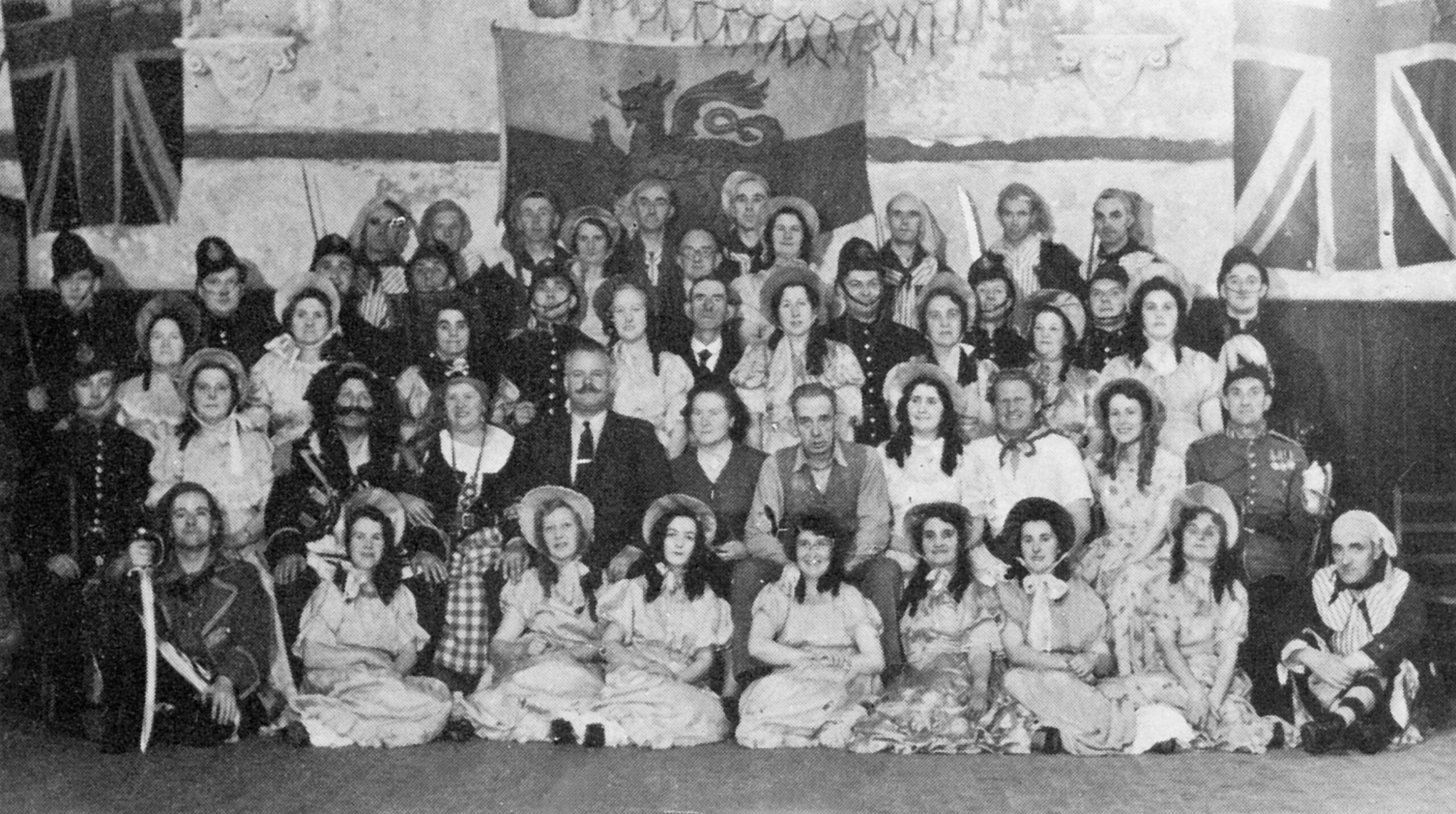

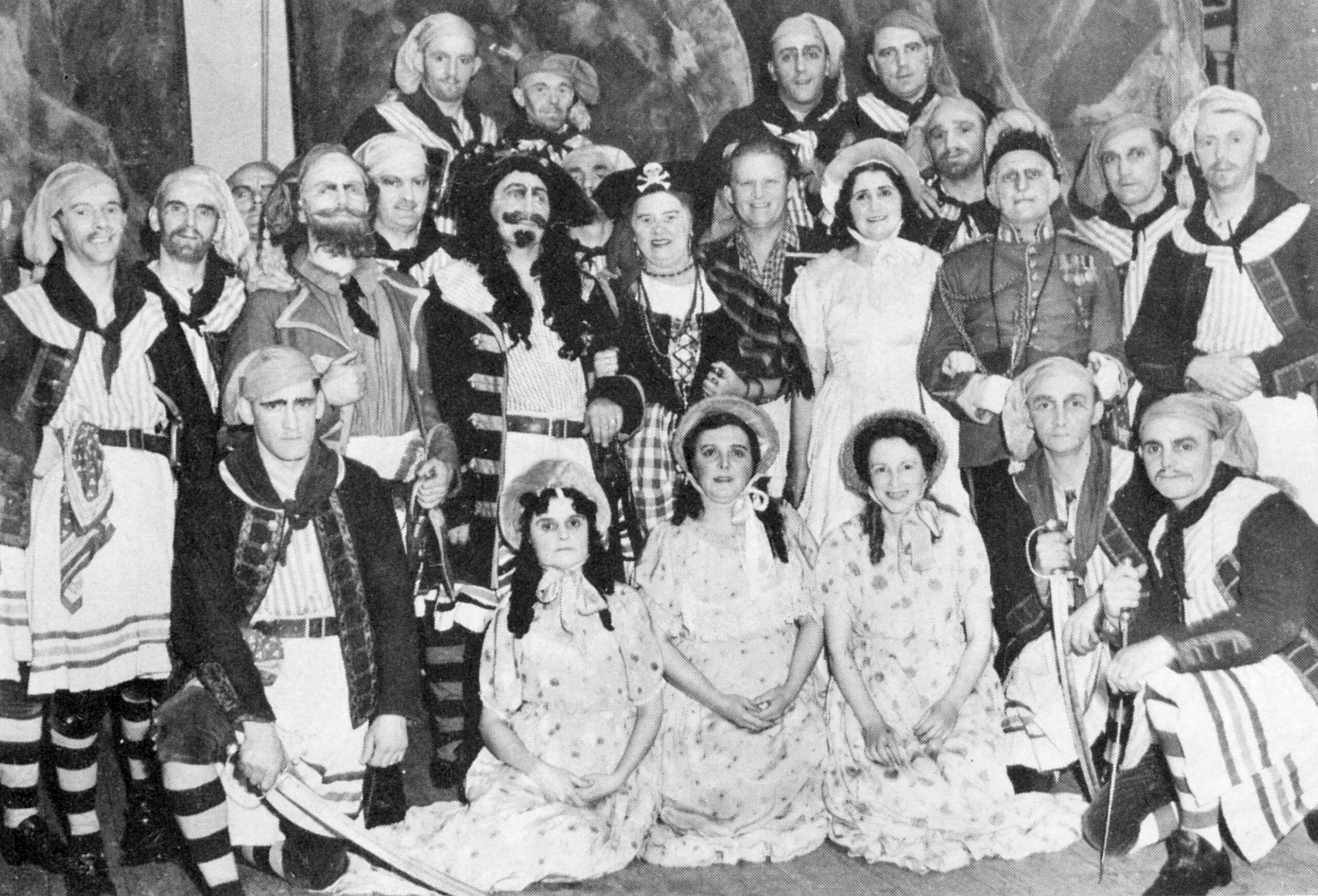
It had been ten long years since the last successful production. This was, of course, mainly due to the horrors and hardships of the war and the effect it had brought to all village life. Rationing of certain items was still in force until 1954.
In September of 1948 the Resolven and District Amateur Operatic Society (R&DAOS) Committee met and made the decision to re-form for the second time. The Society was keen to bring people together to entertain and perform again on the Welfare Stage.
After a general meeting the chosen operetta, as seen above, was ‘The Pirates of Penzance’. There was an invited chorus and rehearsals commenced, sometimes in the Vivian Hall or in Tabernacle Chapel.
Some assistance was given by some members of Briton Ferry Amateur Operatic Society and their Conductor Mr Dillwyn Griffiths at the time, to help with the production.
While rehearsals were taking place, in the early part of 1949 Mr Herbert Thomas was unwell and Mr Glyn Davies was also called upon to assist in the demanding role of Musical Director, even though it was to be his first production for the Society as an Accompanist. Josie Stewart was leaving the village and her replacement was Mr Glyn Davies, who was the son of the newly appointed Chairman, Mr T H Davies, from a well respected Resolven family.


~
There was much excitement in the village, and the show was a success, and the enthusiasm given from the public inspired the Society to start rehearsals on the next show, the following year, which was to be ‘The Mikado’.
During that year in 1949, the Society and its members suffered a very sad loss when their well loved Musical Director, Mr Herbert Thomas passed away. He had been a major influence in the formation of the Society and his dedication to it had been truly exceptional in every way. He had always had the Society’s best interests at heart and would be difficult to replace.

Mr Glyn Davies, the new Accompanist, was the natural successor to Mr Herbert Thomas. The Society was proud and indeed very lucky that Mr Glyn Davies was keen, capable and fully accomplished to take on the position. Mr Cledwyn Richards was chosen as the new Accompanist and this partnership was very favourable and flourished for many shows in the future.
The 1950 production of ‘The Mikado’ marked a special year for the Society as it was the first year that Mr Glyn Davies took up the baton and led the orchestra and chorus as Musical Director. It was to be the first of many shows under Glyn’s leadership.

Glyn was a a quiet, unassuming gentleman who was a teacher in a Port Talbot school (but not of Music).
In his leisure time he was completely dedicated to the art of music and choral singing and all it entailed, including his proficiency in ‘Tonic Sol-fa’ transposing from ‘old notation’ music, which was to prove invaluable to the Society in the years to come.
=
Note: Tonic Sol-fa is a system of musical notation that uses syllables to represent the notes of the scale, eg – used in the musical ‘The Sound of Music’ – ‘do,re,mi,fa,so,la,ti,do’.
=
Many of the choristers in the Society were taught to read sol-fa in the chapels and churches.
Six performances were put on in The Miners’ Welfare Hall from Monday, May 1st to Saturday, May 6th 1950 and was another successful venture for the Society.
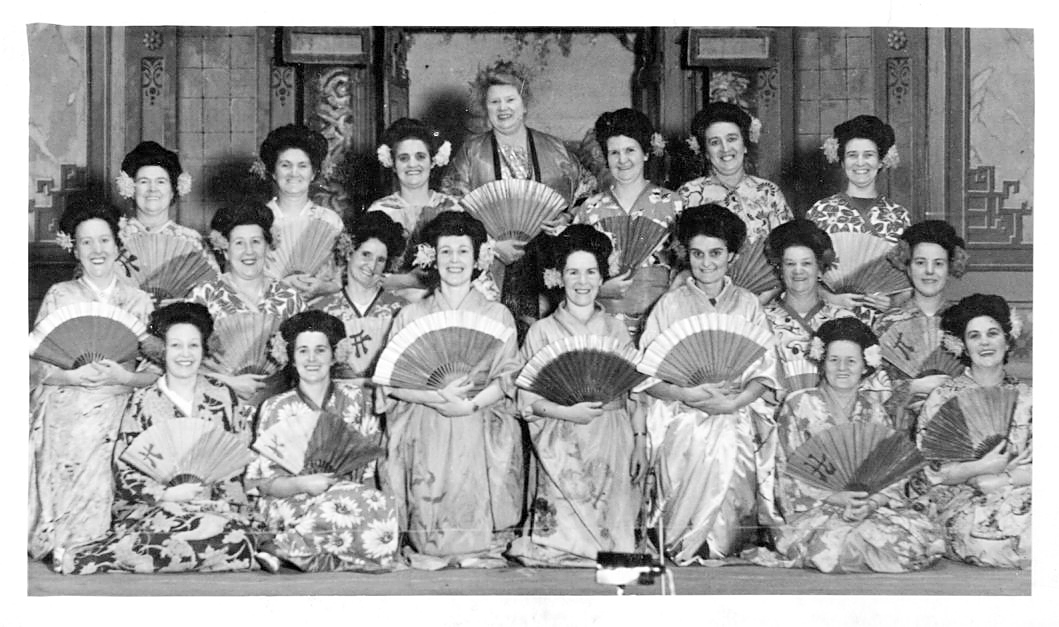
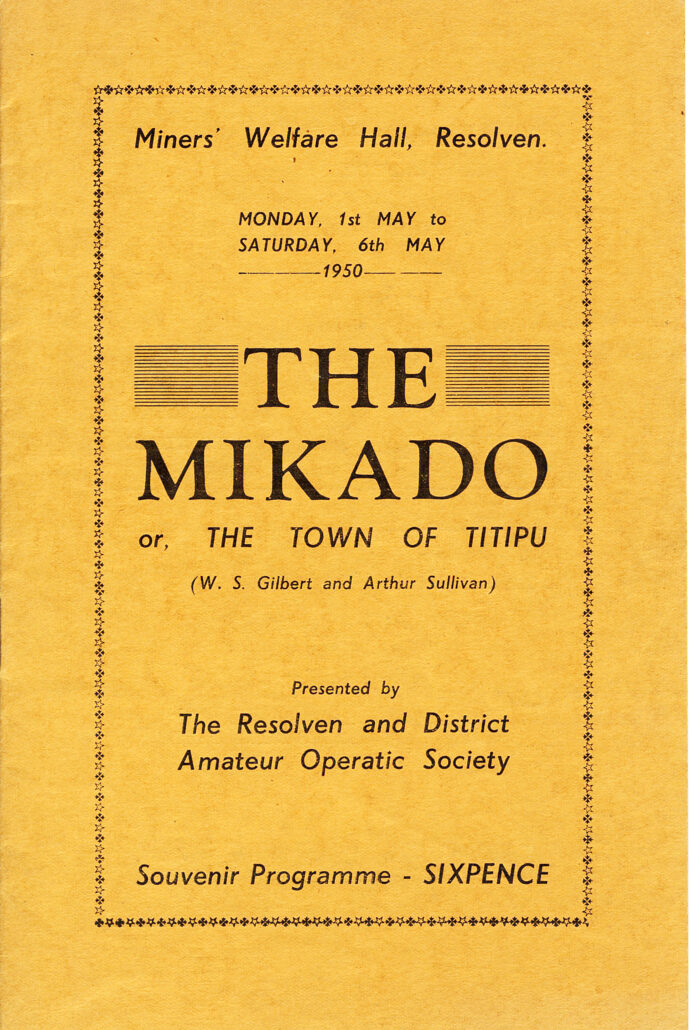
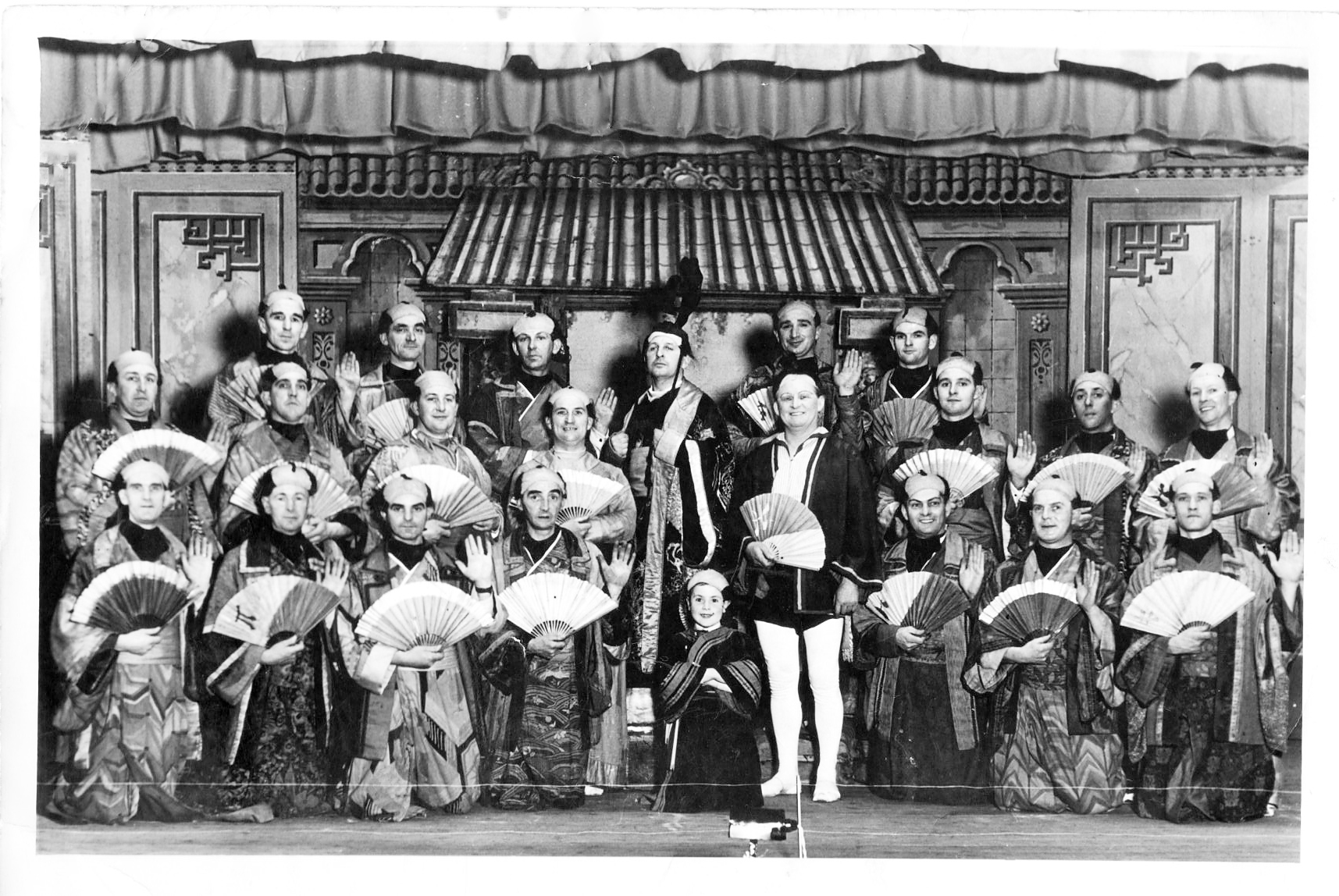
~
For its next show, the Society decided to attempt one of the more difficult of the Gilbert and Sullivan Operettas. ‘The Yeomen of the Guard’ which was written more in the style of Grand Opera.
For ‘Yeomen’ chorus members comprised of 8 Sopranos, 10 Altos, 9 Tenors and 8 Bass. And the large cast of characters were all local to the area.
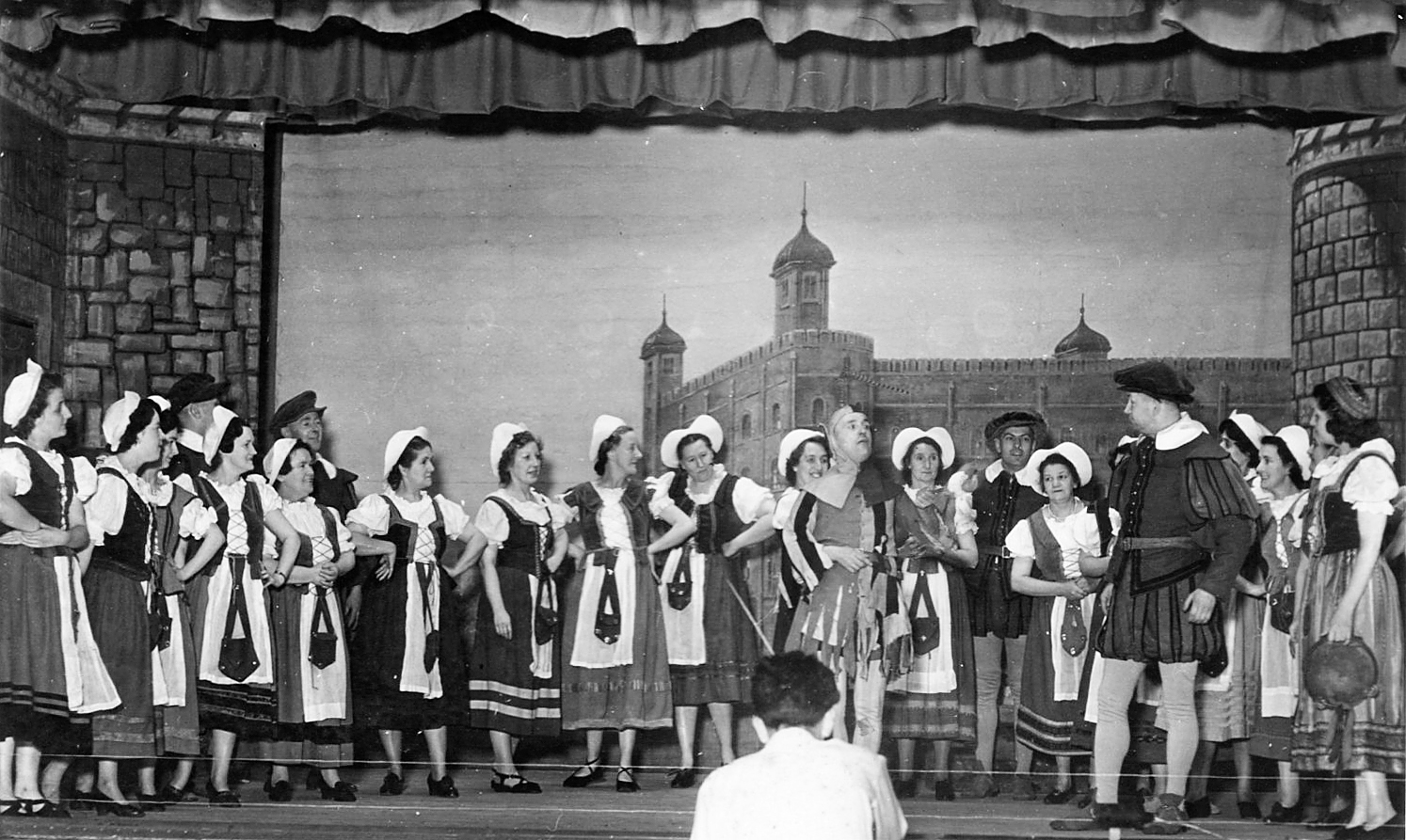
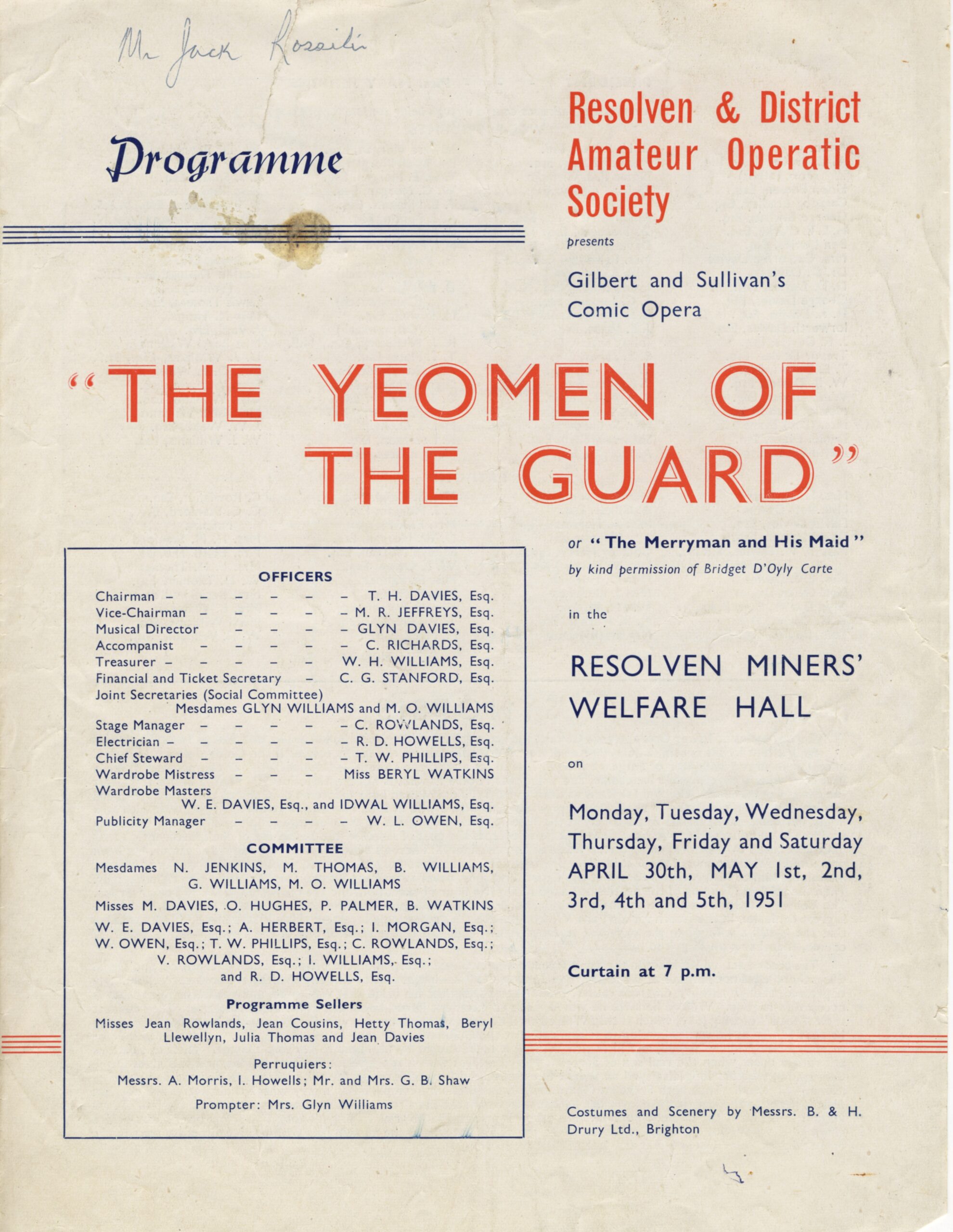
Mr Chegwidden had left the area therefore the Society had to find a new Producer. Mr John McCloy was chosen to undertake the role of the Producer and he proved to be quite a strict disciplinarian to all the cast and chorus.
There was a great deal of rehearsals and committee meetings and the Society was indebted to the Welsh Churches for the loan of their Vestries. The Society was also grateful for the use of the halls of the British Legion and the Resolven YMCA.
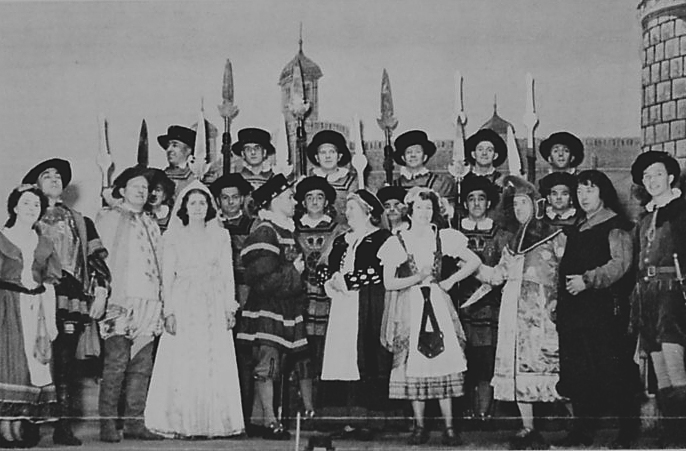
‘The Yeomen of the Guard’ was performed from Monday April 30th to Saturday May 5th 1951.
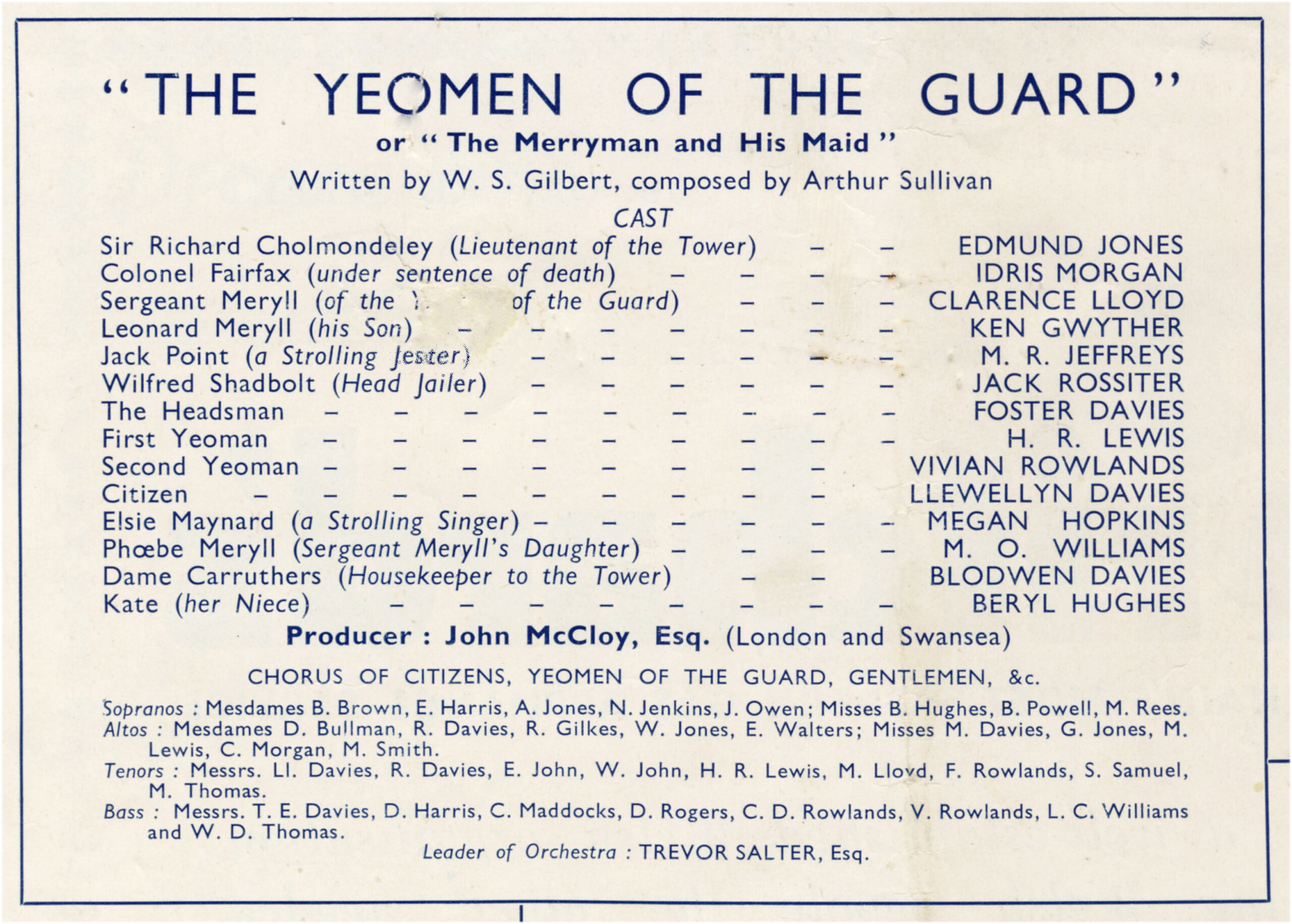
It was quite an experience for the Society but was well received and enjoyed, even though it was a lesser known Operetta by the partnership of Gilbert and Sullivan.
The Society was now gaining a reputation for good choral singing and talented individual artists and this produced an appreciation from audiences who travelled from far and wide to see the productions.
Before the performances, tickets were much in demand and the Society played to a full Miners’ Welfare Hall almost every evening of ‘Opera Week’ as it became known.
~
After another success, rehearsals commenced for ‘Ruddigore’, an operetta which, again, was not performed as often as other Gilbert and Sullivan productions due mainly to some technical and stage difficulties. Part of the story of the show required a particular stage set with character ancestors coming out of their portraits placed around the walls of the scenery. This was a challenge for all involved in the production.
The scenery for Resolven & DAOS was hired and it was no easy task to carry the scenery through the back entrance of the Welfare Hall and up four flights of concrete steps on the narrow staircase. Sometimes, on occasions, the scenery was brought through the hall via emergency exit doors.
=
Note: In 1887 when ‘Ruddigore’ was first performed, there were a number of unusual difficulties in the second Act. During this Act the stage was plunged into darkness for the ‘Ghost Scene’ whereby the Ancestors are reincarnated and come to life from the paintings. Mr Arthur Sullivan, who was conducting the Operetta, was unhappy because the Actors were unable to see his Baton from the stage. However, a technical solution was found by Mr Sullivan, he used a Glass Tube Baton containing a platinum wire that glowed red in the dark. Surely a genius idea in 1887.
=


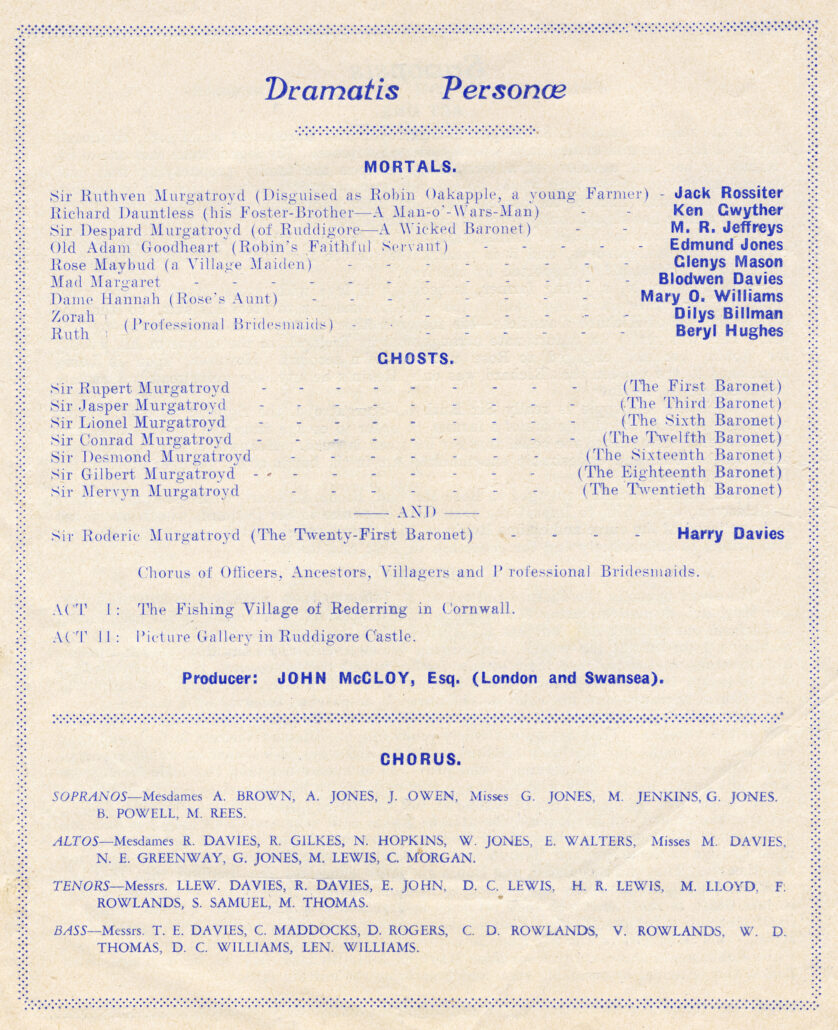
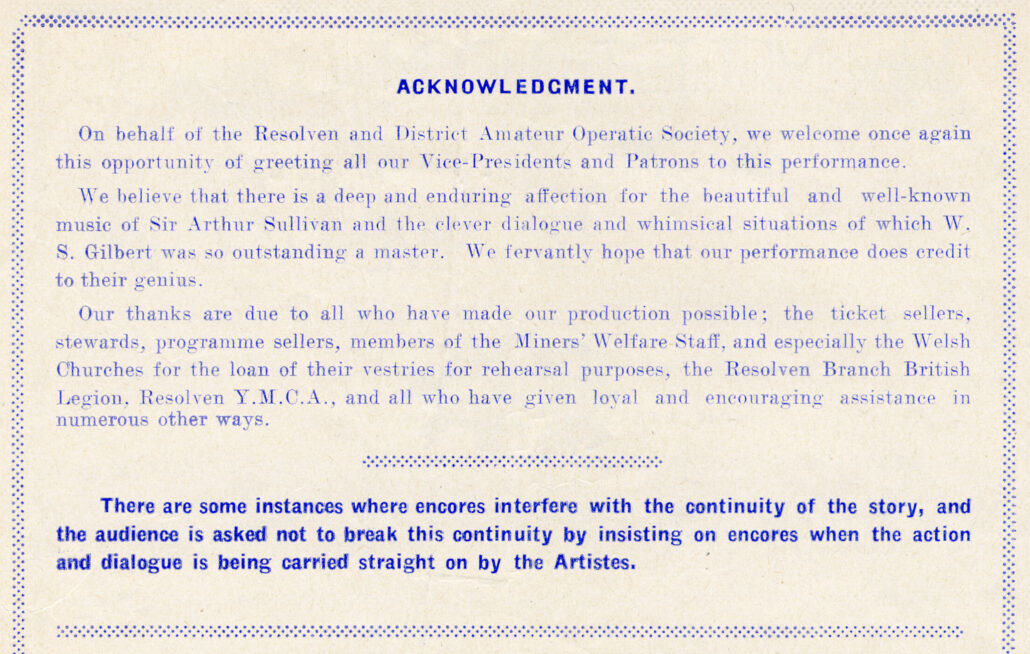
Once again, Mr John McCloy was the Producer and the performances were held at the Miners’ Welfare Hall from May 4th to May 10th 1952. During the week of the show, the Social Committee served tea and biscuits for the cast, chorus, orchestra and stage helpers during the interval. The interval developed into quite a social occasion when many former members and visitors came back stage to see and compliment the performers.
About a month before the Resolven production in May 1952, members of the Society travelled to the Bristol Hippodrome to see a matinee performance of ‘Ruddigore’ performed by the professional D’Oyly Carte Company who specialised in the Operettas of Gilbert and Sullivan. This visit proved to be a very enjoyable and rewarding experience which was repeated for the following two years.
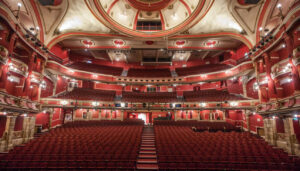
=
Note: The D’Oyly Carte Company was established on the D’Oyly Carte Island, a privately owned small piece of land situated right in the middle of the River Thames in London. It was named after Richard D’Oyly Carte who owned the island in the late 1800’s and he invited his friends, W S Gilbert, the Lyricist and Arthur Sullivan, the Musician to visit. He was keen to hold performances on the island and allowed the two gentlemen to practice and perform their newly written Operettas on the island. These productions were different and a clever, refreshing change from grand opera, and became extremely successful.
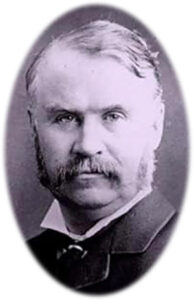
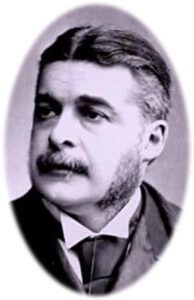
.
The D’Oyly Carte Company today, (in operatic circles), is a world renowned society that still uses the name and they perform G & S Operettas all over the world.
Gilbert and Sullivan produced 14 operettas over the 25 years they were together. Summer Concerts and local societies are still performing on the D’Oyly Carte island in 2025. (Post Code KT13 8LX).
.m
.
=
.
Mr Richard Jones from Penrhiwceiber returned to produce ‘Ruddigore’ for R&DAOS and the dates of perfomances were May 4th – May 9th, 1953.
‘Ruddigore’ was a more serious show with haunting music, and difficult chorus numbers but was still enjoyable, especially for visiting Societies.
~
One of the most popular and entertaining of all the G & S operettas was decided upon for the 1953 production, ‘The Gondoliers’.
Worthy of note was the strange feature which showed that the G & S partnership was very different from other productions in that, it was understood, encouraged, and allowed, that during any performance of G & S, some of the dialogue could be changed to be relevant to the time it was being performed, with comedy anecdotes on any subject but those mainly making fun of political or topical issues. Whenever possible, Resolven & District Amateur Operatic Society embraced this feature in their performances.
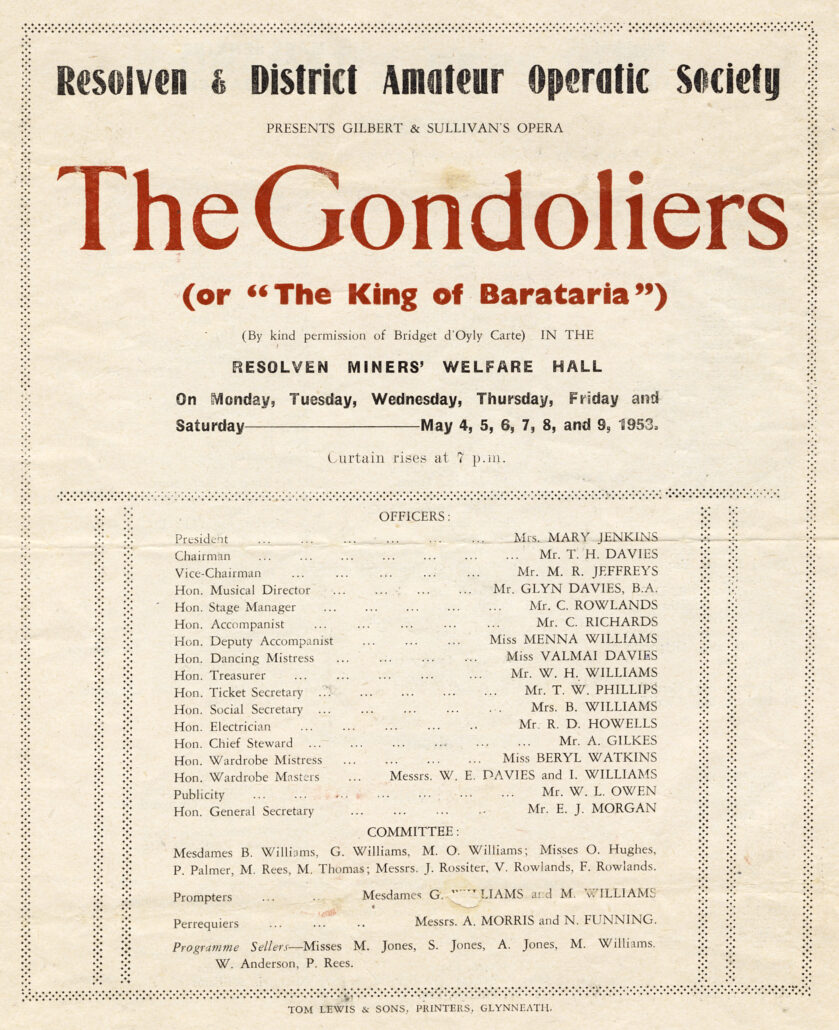
For the first time in the history of the Society a dancing mistress was appointed, and the Society was fortunate in having the services of Miss Valmai Davies who set a high standard from the beginning. Talent obviously was in abundance in the family of Miss Davies as she was the sister of the Musical Director, Mr Glyn Davies, and the daughter of Mr T H Davies, who had been Chairman of the Society since its re-formation in 1948. Miss Menna Williams as Deputy Accompanist was also appointed and Mr Neville Funning joined the back stage members of the Society with Mr Arthur Morris as a Perruquier (Make-up artist).
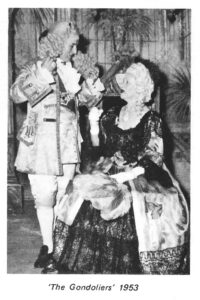
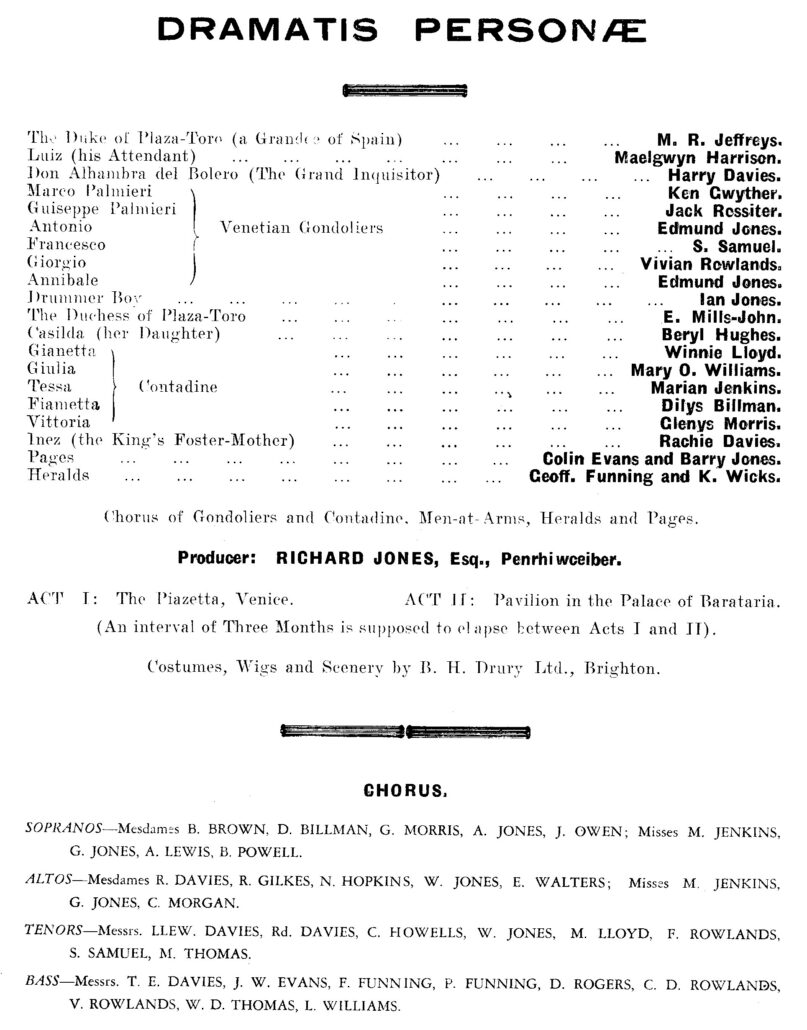
Mr Richard Jones, Penrhiwceiber returned as the producer for ‘The Gondoliers’ and performance dates were May 4th – May 9th, 1953.
The Gondoliers was a very entertaining show, for the audience and for the Society, with its colourful costumes, clever musical numbers and very lively dancing routines.
During the Summer of 1953, the chorus were asked to take part in performances of ‘Bethlehem’ by Rutland Boughton, a choral drama, that would be held in the Autumn. It was to be a joint venture, as soloists taking part were from Briton Ferry AOS, while the chorus were from Resolven and District AOS. Rehearsals took place under Mr Glyn Davies. The final rehearsals and the performances were all musically exciting and conducted by Mr George Barker, Covent Garden, London. Three performances took place, at Morriston, Llanelli Market Hall and Resolven Miners’ Welfare Hall. It was an unforgettable and special experience for the members of the chorus who took part.
~
In 1954, the Society’s decided to depart from their G & S tradition, and perform the charming music of Edward German’s ‘Merrie England’.
The President of the Society, Mrs M Jenkins left the village and Mr T H Davies, the former Chairman was unanimously chosen as President. Mr Idwal Williams replaced him as Chairman.
Practices for cast and chorus were well advanced when Mr Glyn Davies was taken ill, and spent time in hospital. He made an excellent recovery but the production of ‘Merrie England’ had to be postponed until 1955.
The Resolven and District Amateur Operatic Society and ‘Opera Week’ was now an eagerly awaited favourite in village culture. In the years to come, the Society, and particularly the Chorus would become so established under the baton of Mr Glyn Davies that they were able to put the name of Resolven firmly back on the musical map of Wales.
Of course, the name had already been known much earlier, due to the three Doctors of Music who all hailed from Resolven.
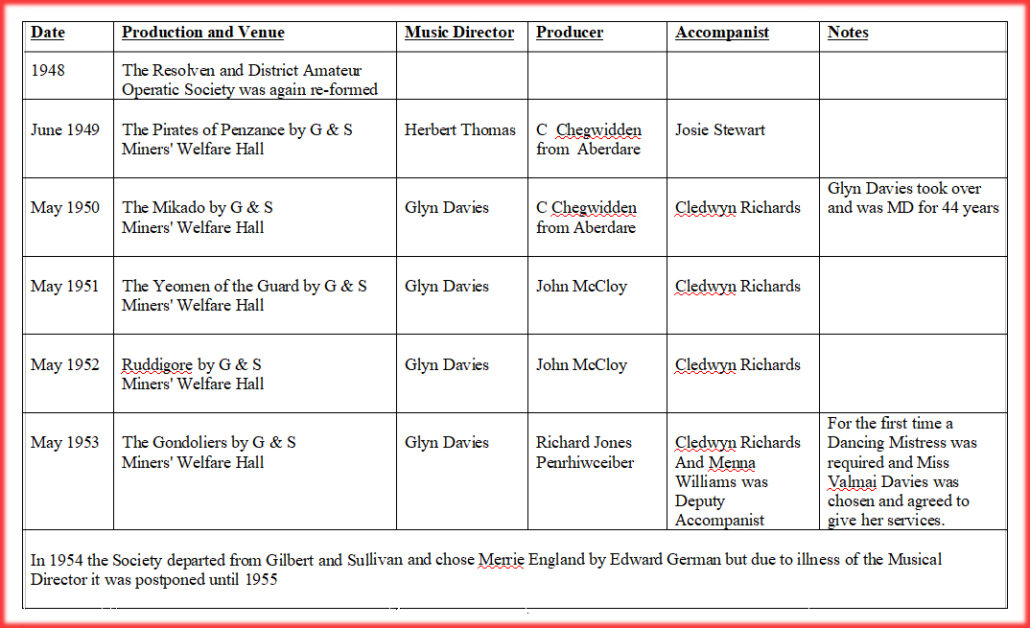
~ ~
Some information taken from ‘Resolven Operatic Society’ – ‘A History from 1925 ~ 1976’ by Nesta Hopkins with additional information from Owen & Christine Davies. Compiled by Lorna & Hugh Lewis.
~ ~ ~ ~
/to be continued – with Part 3
